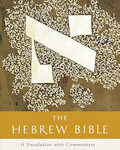I was two years into the 14th Daf Yomi cycle when the 3rd cycle of the 929: Tanakh B’yachad, or “929: Bible Together” started on February 6, 2022 – the project was originally started as an initiative by the Israeli Education Ministry. It’s similar in approach, in this case studying one chapter of the Tanakh, the Bible, a day, which for Jews is the five books of the Torah, plus the 19 canonical texts that accompany it (929 chapters, thus the name of the project). So it’s generally a shorter read, and unlike the Talmud, there’s no discussion or argument on the pages. This project takes one day shy of 186 weeks, or just over 3½ years, so less than half the time of the Daf Yomi.
If you’ve ever read the Bible, you know it’s presented like a somewhat rambling historical text. And although I’ve probably read all of it over my life, more than once, I’ve never sat down to read it in order, with the intent to really think about it, as a book. I have no investment in whether or not anything in it is based on reality or faith. Like the Daf Yomi, I’ll present this in an outline form to keep the pages not too long. I’m also not doing this directly here on the blog, but keeping my thoughts “tight” by doing this as a Twitter feed, here, with “illustrations”. Unlike the Daf Yomi, this project isn’t a daily practice, but only five days a week, Sunday through Thursday, leaving the day leading into and following the Sabbath for spiritual rather than scholarly pursuits.
At least for the Torah part of this, I’m using an “alternative” source, as most of the versions we tend to get to read are versions that were written by scholars of the Catholic Church, who had their own worldview to impose… the versions like King James, New International, New American, Common English, and even the Christian Standard! I’ve chosen to use a combination of the version posted on Sefaria, which is the Urim Publications version, a Jewish translation and publishing house in Israel, and Robert Alter’s The Hebrew Bible, where he and other ancient language scholars went back and re-translated the Hebrew and Aramaic and tried to do so without putting any spin on it. It’s actually pretty interesting, since numerous passages are quite different reads from the way I grew up with them. Away we go!
- Genesis – “Origin”
- Exodus – “Way Out”
- Leviticus – “Law of Priests”
- Numbers – “In the Desert”
- Deuteronomy – “Remember, Respect, Repent”
- Joshua – “Salvation”
- Judges – “Repeated Failure”
- I Samuel – “King Me!”
- II Samuel – “Rise Up”
- I Kings – “Politics or Religion”
- II Kings – “The King is Dead…”
- Isaiah – “Wiping the Slate Clean”
- Jeremiah – “Joy to the World”
- Ezekiel – “A Psychosexual Paean to God”
- Hosea – “Phoenix Rising”
- Joel – “Routing the Enemy”
- Amos – “Actions Speak Louder than Words”
- Obadiah – “You’re All Dead to Me”
- Jonah – “The Whale”
- Micah – “Remaking Israel”
- Nahum – “I’m Done with You!”
- Habakkuk – “By Spirit Alone”
- Zephaniah – “Fallen Enemies”
- Haggai – “Build My House!”
- Zechariah – “We Are The Future”
- Malachi – “Is Everybody With Me?”
- Psalms – “Sing a Song”

